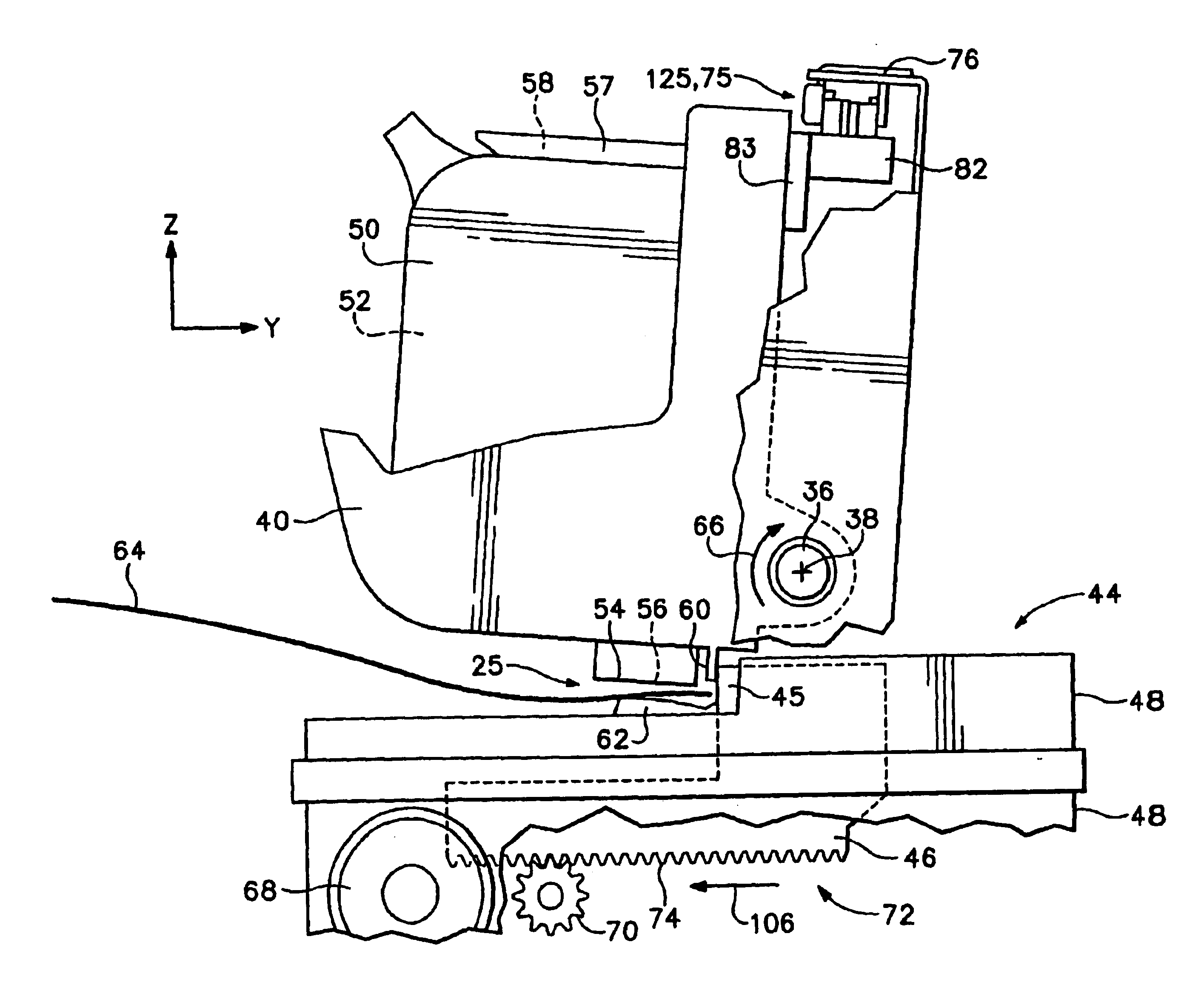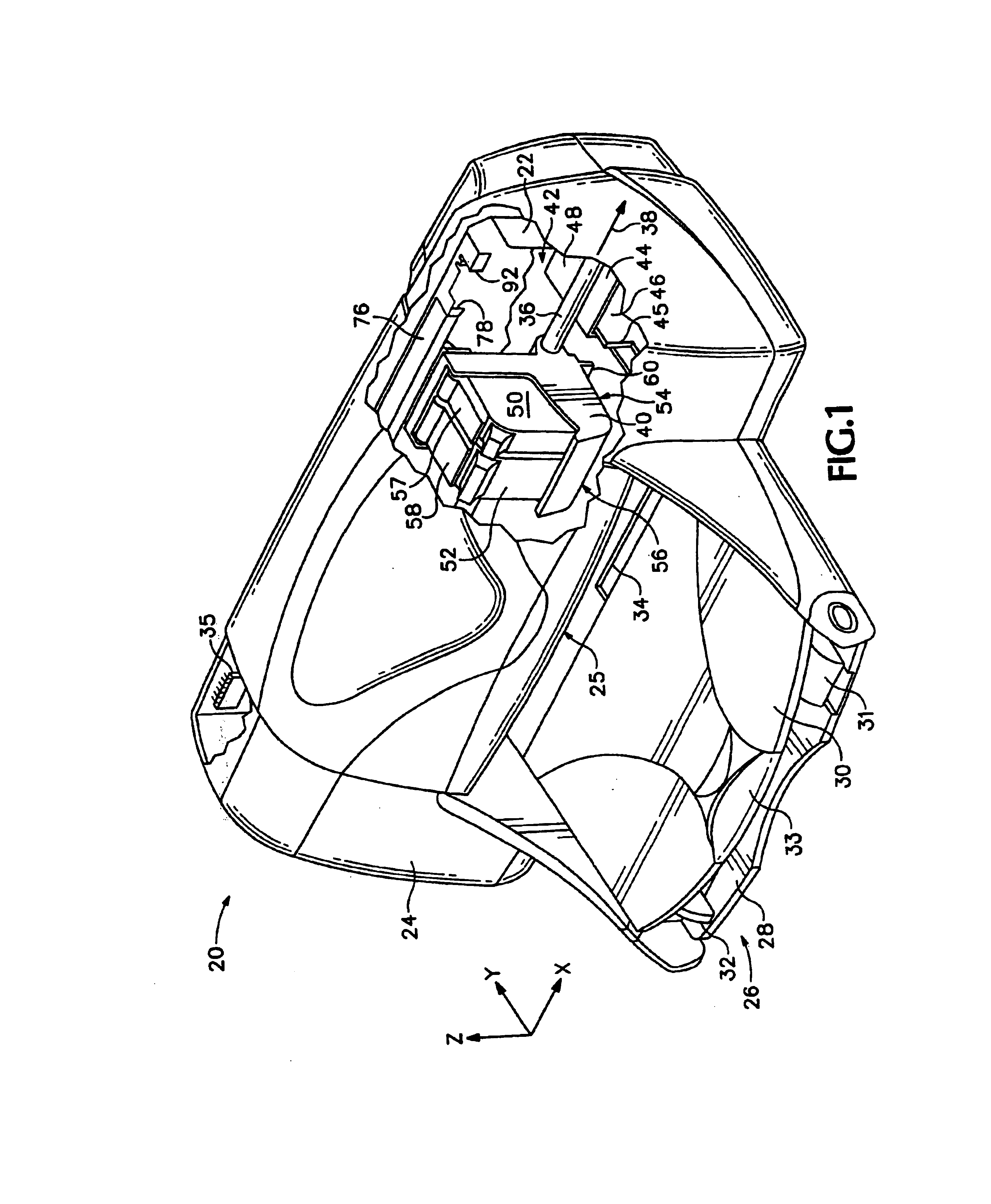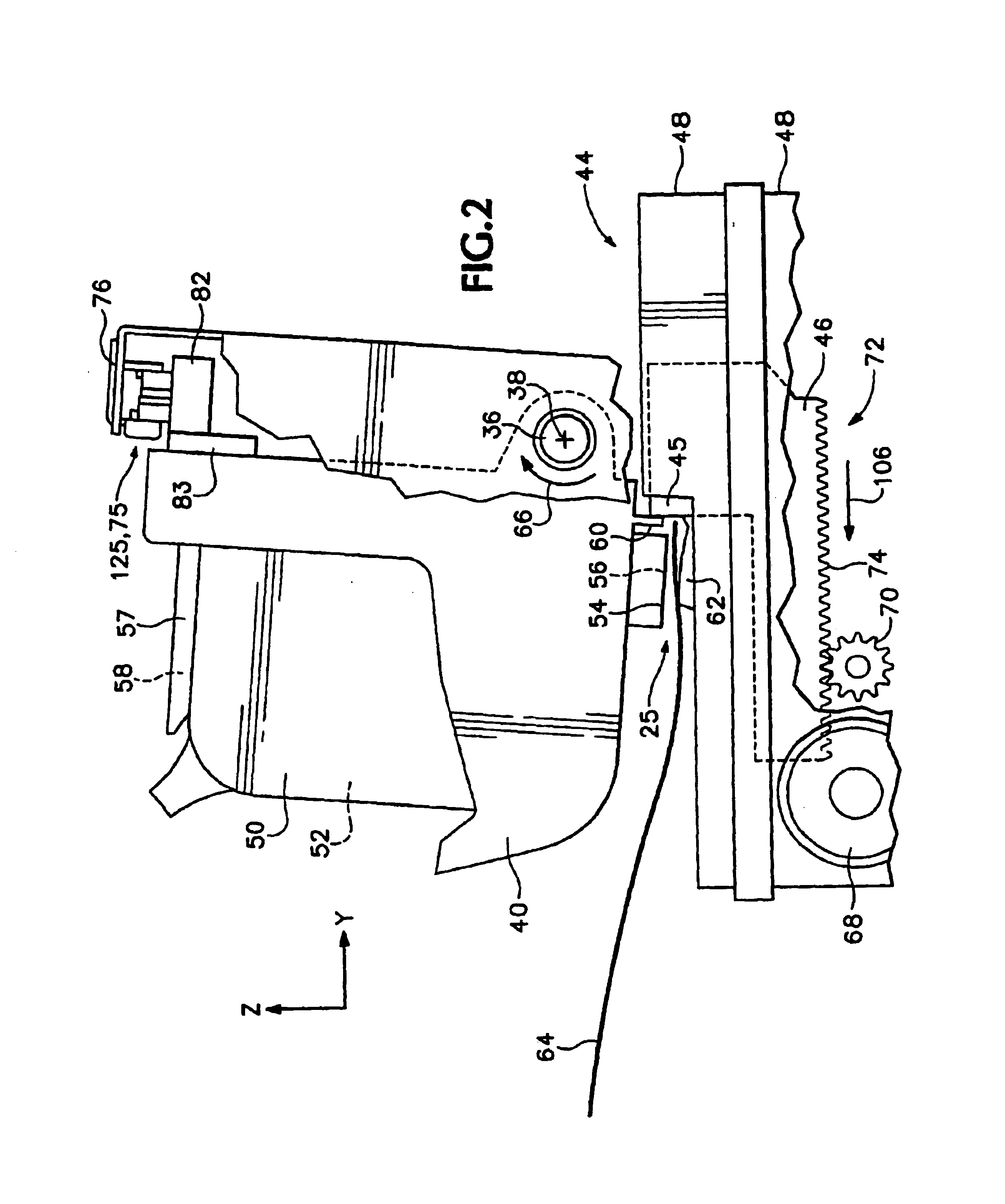Automatic printhead-to-media spacing adjustment system
a technology of automatic adjustment and printhead, applied in the direction of printing mechanism, printing, power drive mechanism, etc., can solve the problems of affecting the quality of printheads, affecting the output quality, and obtaining disappointing outputs, etc., to achieve high quality
- Summary
- Abstract
- Description
- Claims
- Application Information
AI Technical Summary
Benefits of technology
Problems solved by technology
Method used
Image
Examples
Embodiment Construction
FIG. 1 illustrates an embodiment of a hardcopy mechanism, here shown as an inkjet printer 20, constructed in accordance with the present invention, which may be used for printing for business reports, correspondence, envelopes, desktop publishing, and the like, in an industrial, office, home or other environment. A variety of inkjet printing mechanisms are commercially available. For instance, some of the printing mechanisms that may embody the present invention include plotters, portable printing units, copiers, cameras, video printers, and facsimile machines, to name a few. For convenience the concepts introduced herein are illustrated in the environment of an inkjet printer 20.
While it is apparent that the printer components may vary from model to model, the typical inkjet printer 20 includes a chassis 22 surrounded by a housing or casing enclosure 24, typically of a plastic material. Sheets of print media are fed through a printzone 25 by an adaptive print handling system 26, co...
PUM
 Login to View More
Login to View More Abstract
Description
Claims
Application Information
 Login to View More
Login to View More - R&D
- Intellectual Property
- Life Sciences
- Materials
- Tech Scout
- Unparalleled Data Quality
- Higher Quality Content
- 60% Fewer Hallucinations
Browse by: Latest US Patents, China's latest patents, Technical Efficacy Thesaurus, Application Domain, Technology Topic, Popular Technical Reports.
© 2025 PatSnap. All rights reserved.Legal|Privacy policy|Modern Slavery Act Transparency Statement|Sitemap|About US| Contact US: help@patsnap.com



